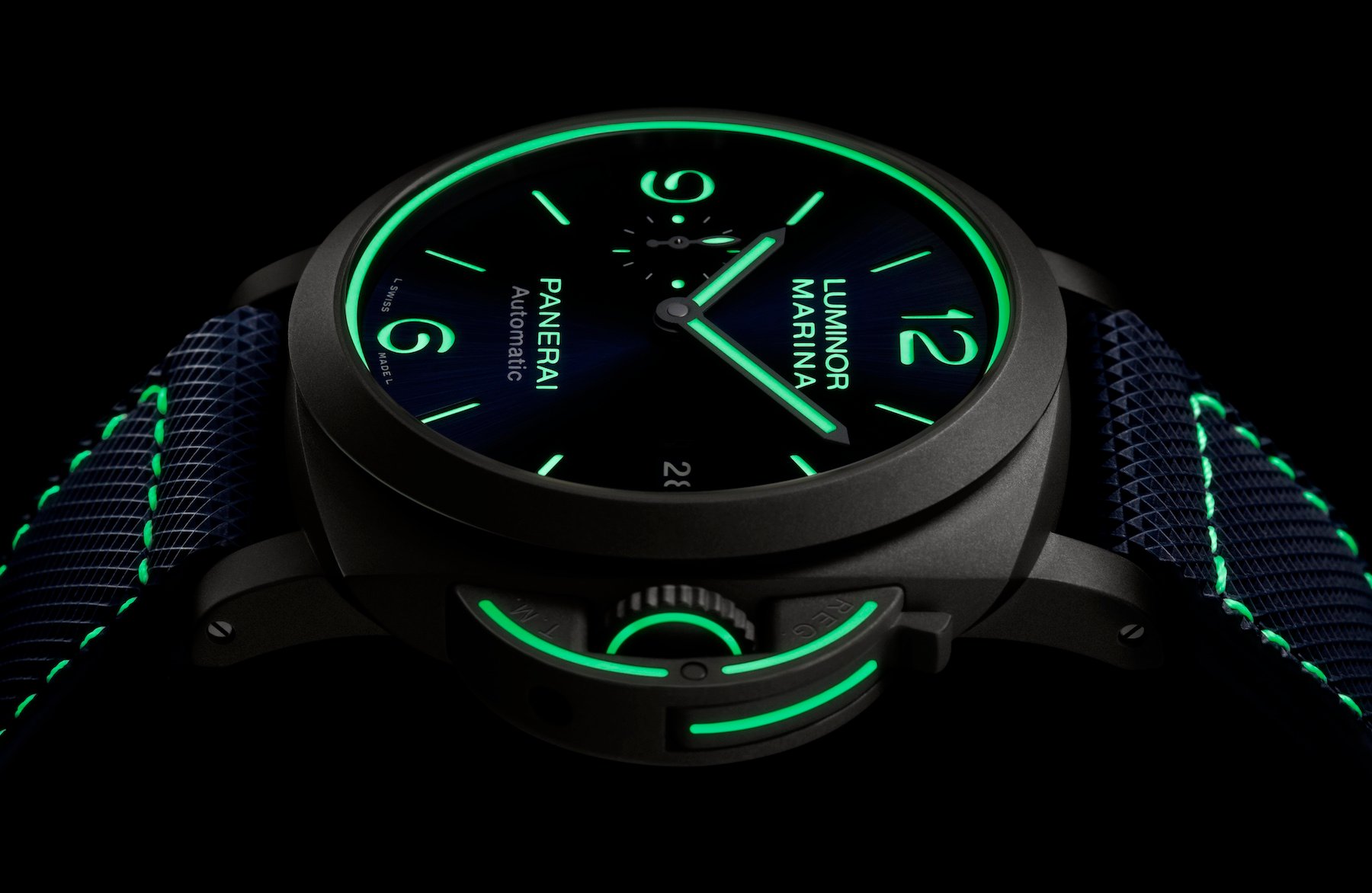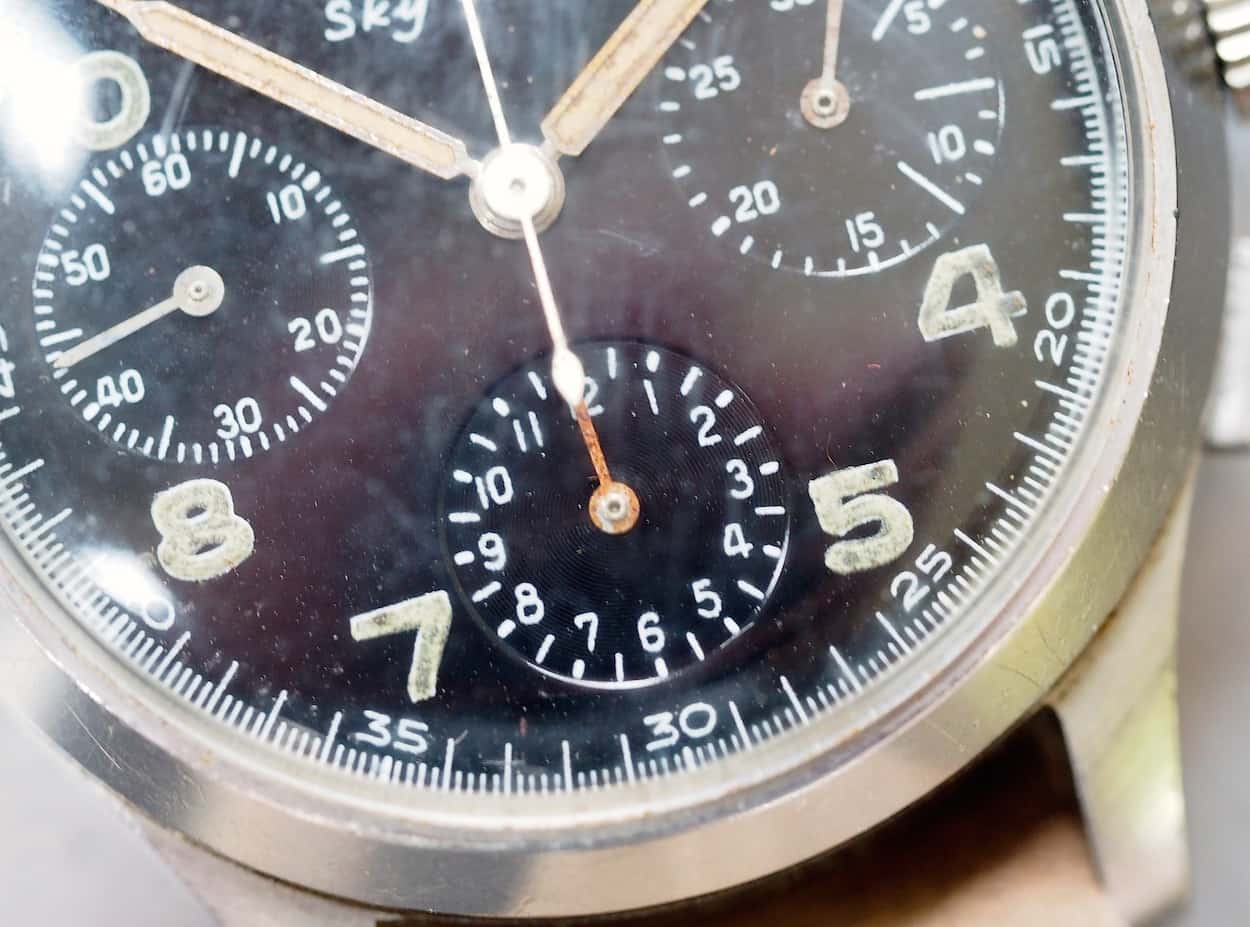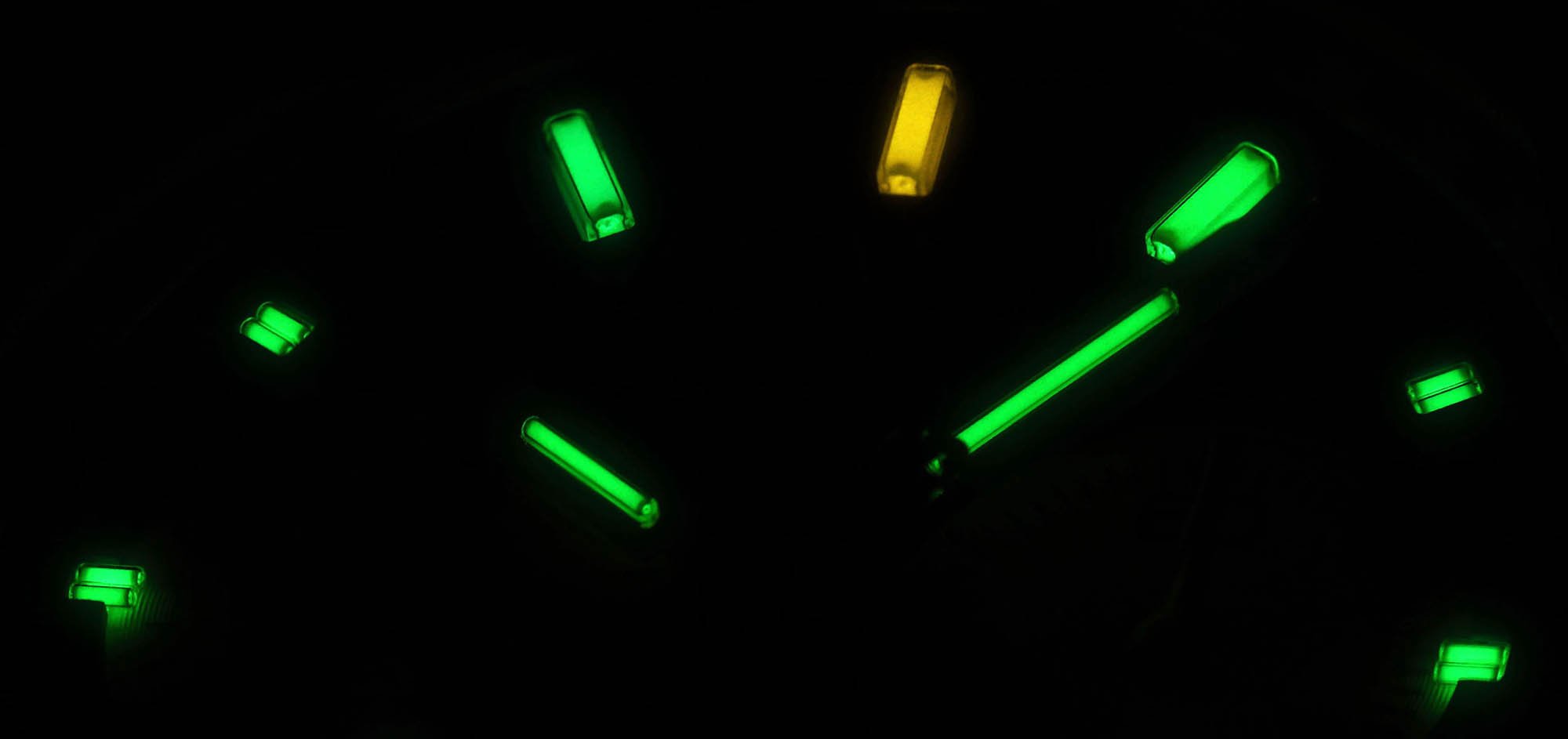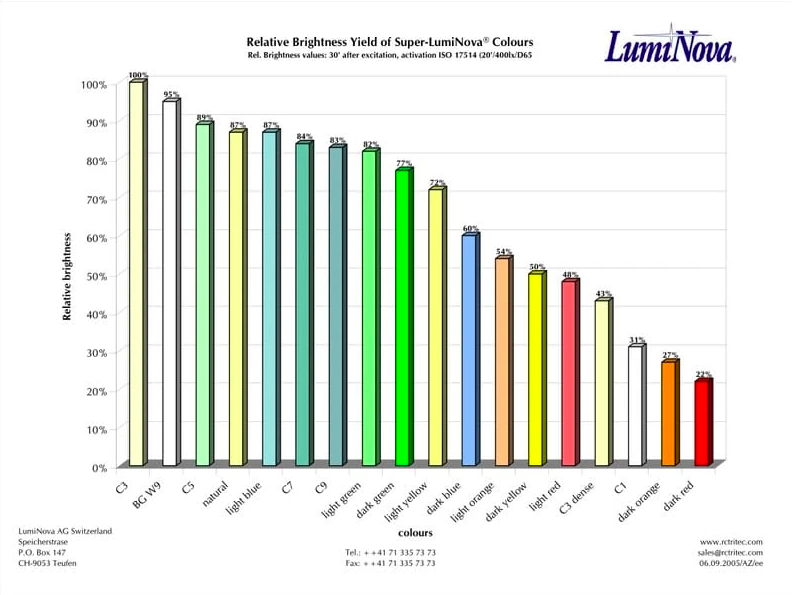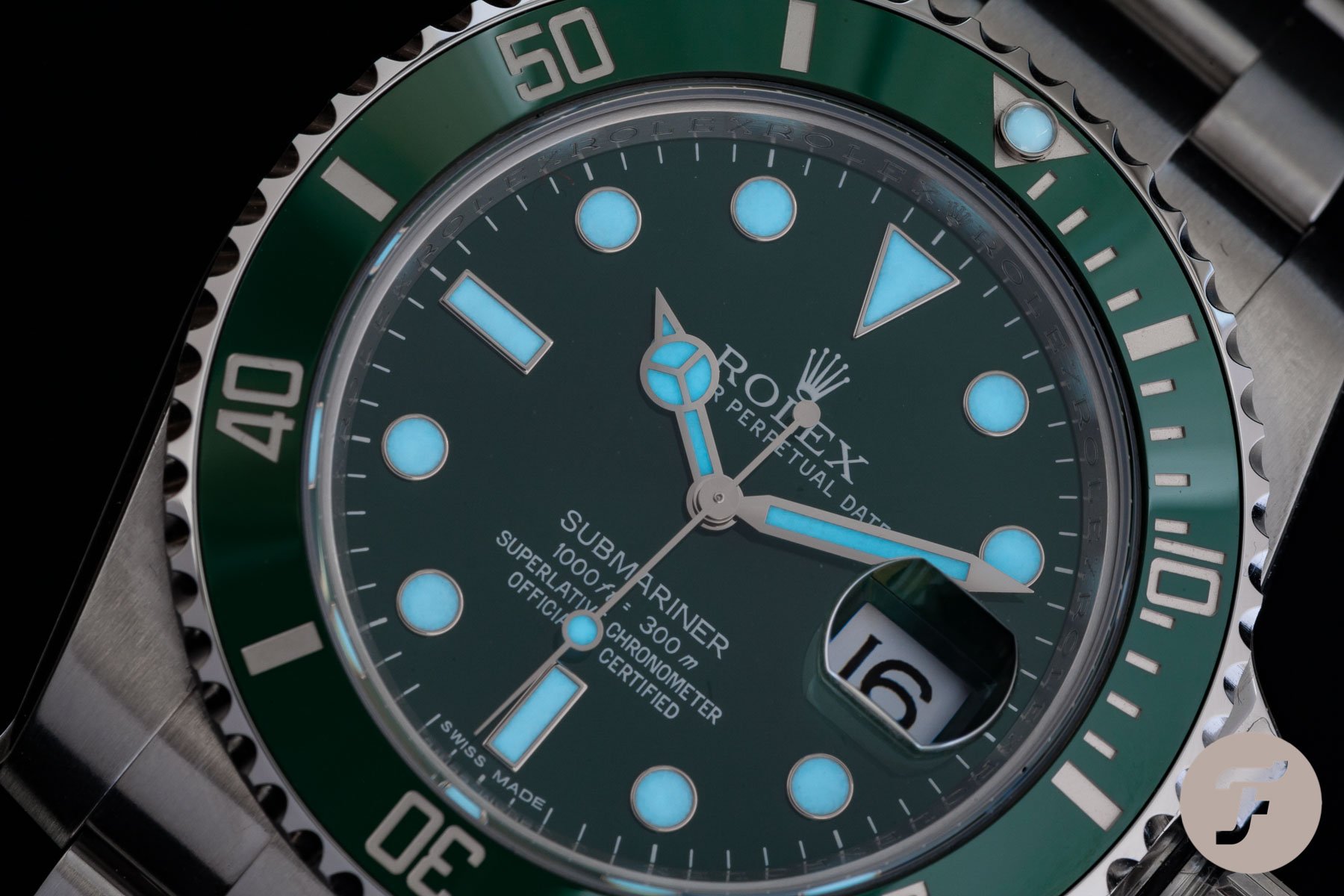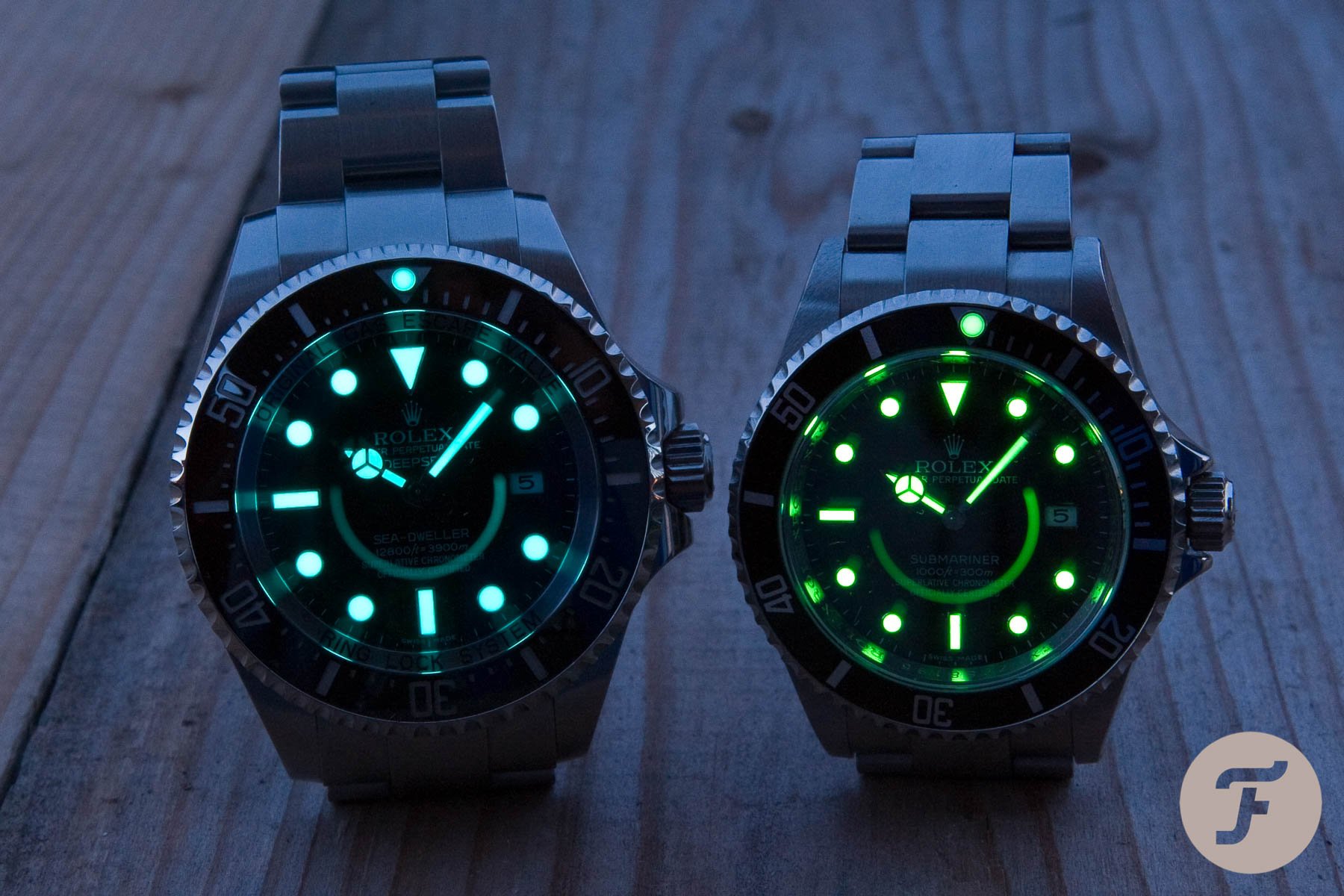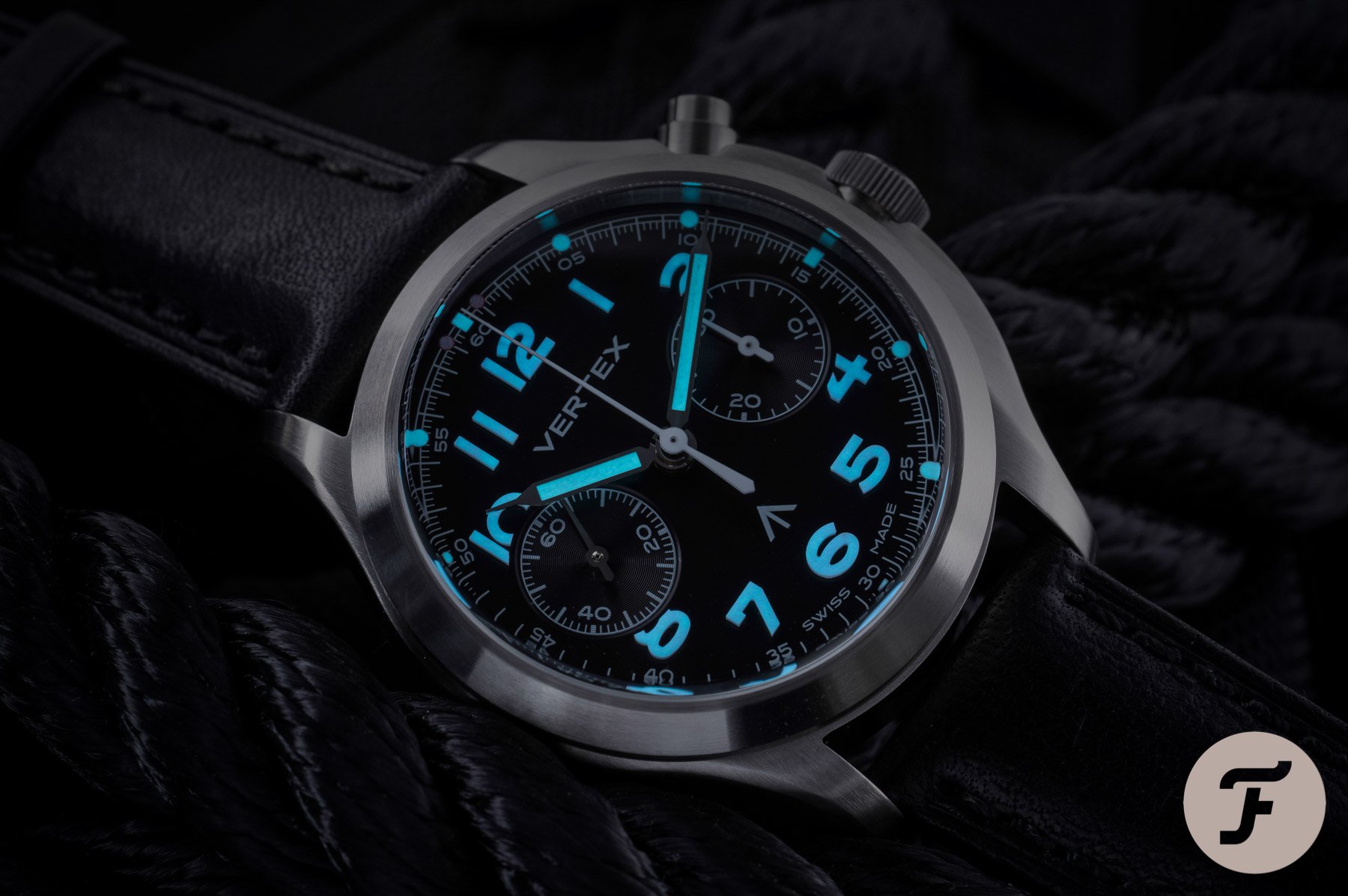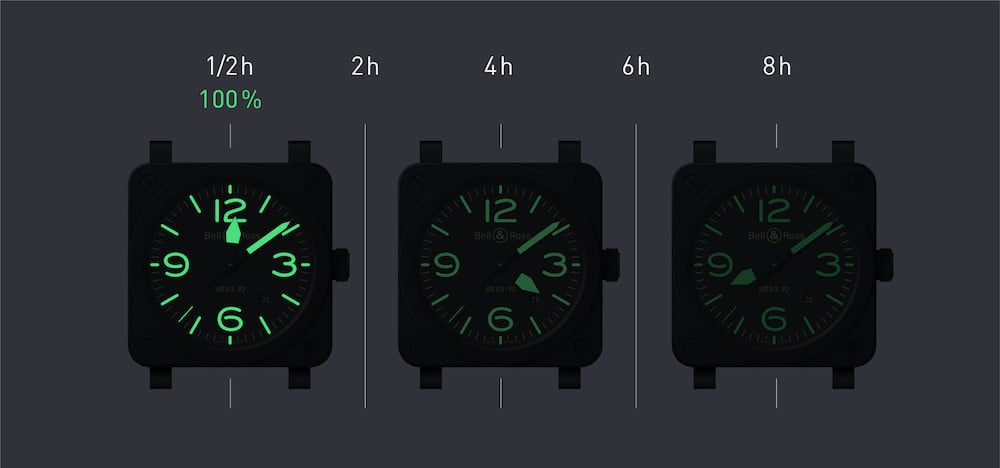You Asked Us: Which Watches Glow In The Dark Best?
There are many different ways to illuminate a watch face at night. Different materials, different styles of application, different methods entirely. And within those different methods, there are vastly different qualities of execution. Let’s take a look at some of the lume styles available.
You may rarely use your watch at night. That’s fine. I’m not sure I do either, to be honest. Regardless, there are few things I scrutinize more thoroughly prior to purchase than lume performance, and even more importantly for me, lume homogeny. I like to see a clean, crisp glow from the hour markers. And almost as important, I want that glow to be on the same level of intensity as the hands’. So often, hands blaze brightly while hour markers pathetically kick-out an inferior glow. Why is that?
A word on lume homogeny
What do I mean by lume homogeny? It’s a term I coined to describe the relative performance of all luminous elements of a watch dial’s display. Some watches have brilliant markers. Some watches have brilliant hands. Occasionally, watches will mix lume colors and types with varying degrees of success. What I want to see, second only to quality, is consistency among these elements. I don’t want blazing hands and weak little lume plots for the hours. In my opinion, brands should either do this stuff well or not at all.
A lot of lume homogeny comes down to the lume’s background. Without good foundations, even the very best lume would perform sub-optimally. When it comes to hands, the luminous compound is very often “hanging” between a solid frame. There is nothing behind that lume. It is fixed in a solidified state. The light (or heat) source, which charges the lume, can approach from all angles. And the light given off by un-backed lume can be incredibly bright.
…there is no substitute for the highest quality luminous compound.
Hour markers, on the other hand, especially pad-printed hour markers sitting on a dark dial, need several applications to attain sufficient thickness to combat the dulling effect of their foundations. Printing a white (or reflective) background first can help (check out Lüm-Tec for a well-explained guide to this process), dropping the lume into polished, applied markers is even better, but there is no substitute for the highest quality luminous compound paired with these foundationary techniques. So let’s learn more about some of the materials that make watch dials glow in the dark.
Radium
When watch and clock faces were first treated with luminous material that material was radium. Unfortunately, radium is potently radioactive. That is, for want of no clearer term, bad. Concerningly, radium has a half-life of just over 1,600 years. That means it only loses half its radioactivity every 1.5 millennia. Given that the watchmaking industry as we know it has existed for less than 25% of one half-life, you can appreciate we’re dealing with some pretty dangerous stuff.
…radium is pretty damn effective.
When freshly applied, however, radium is pretty damn effective. That effectiveness does dwindle over the years, however. And even though the material will still kick out enough radiation to send a Geiger counter haywire, it won’t perform as well as you might expect decades after application when the lights get low.
Radium hasn’t been used in watchmaking for a long time. And while radium-treated pieces are collectible, they should be handled with care. Many watchmakers are, rightly, cautious about opening the cases due to the carcinogenic gasses that can accumulate within. Unless you own a museum of homology, steer clear. There are far less dangerous alternatives out there…
Tritium
Tritium gas in small tubes is seen in a lot of tactical watches these days. It has the advantage of always being “on”. It does not need to be charged and emits a consistent and pleasing glow in all light conditions (although it is only noticeable when it gets dark).
Unfortunately, tritium is also radioactive, although far less than radium. It also has a much, much shorter half-life of just over 12 years. What that means negatively, however, is that your watch will get 50% duller in the dark every 12 years or so. Theoretically, the lume will never run out entirely, but after a lifetime of wear, it will be functionally poor.
Interestingly, tritium wasn’t always confined to glass tubes. As a successor to radium, it was mixed with paint to create the forerunner to modern, radiation-free luminova. That was used as a substitute until the mid-’90s. After that, everything changed.
LumiNova and Super-LumiNova
LumiNova’s history began in 1941 when Kenzo Nemoto of Japan founded his eponymous company. He specialized in phosphorescent paints, which eventually led to the birth of LumiNova in 1993. Later, RC Tritec AG was established in Switzerland. RC Tritec holds the licensing rights to the formula and produces luminous compounds for the watch industry branded as Super-LumiNova. The materials work in the same way, but the “Super-” prefix guarantees Swiss origin and all the notions and expectations of quality that go with it.
UPDATE: I don’t normally do this, but since the article went live I was contacted by Albert P. Zeller, CEO of RC Tritec itself with some really cool additional information I want to share with you. Enjoy:
Albert P. Zeller, CEO RC Tritec statement
“LumiNova is the brand name for industrial pigments, which are for example used for security signs. It is produced in China and in Portugal. Swiss Super-LumiNova, our brand, is fully produced in Switzerland at our site, with a strong focus on fulfilling the needs of the watch industry.
“[Much more hard work goes into the production of] our materials than for a regular industrial pigment. This means that we are only using selected raw materials. [We burn] our pigments in a specially developed furnace with adopted conditions, creating specialized grain sizes. [We can then color it as the customer wishes]. We have around 3000 different colors. We offer a triple quality control to ensure an always repeatable quality over the decades.
“Since ’93 we [have improved] the performance of our pigments. Nowadays, our X1 quality is glowing twice as bright and as long as the first material launched. We have also adopted the chemical base structure to optimize the performance. So, therefore, the materials are [no longer] the same thing as industrial LumiNova.
“The watch industry is using Super-LumiNova and not the industrial-grade LumiNova which would not fulfill the quality demands (grain size, color variations, performance, etcetera).”
Different types of Super-LumiNova
So Super-LumiNova became the human-friendly alternative to the quietly murderous substances we’d been coating our watches with previously. There are loads of different types of Super-LumiNova, usually demarcated by codes such as C1, C3, BG W9, and so on. These codes distinguish the lume colors from one another but, annoyingly, don’t go in the order (of brightness or shade) that you might expect.
For example, C3 (a pale cream/yellow that glows green) is theoretically the brightest standard LumiNova. It is brighter than C5 (green), C7 (green/blue), and C9 (blue), but C1 (white) is way, way down the chart. Complicating matters is the presence of BG W9 (also white), which, relatively speaking, is the second brightest standard compound.
But it doesn’t end there. The way in which lume is applied (and how much of it there is) affects performance drastically. Furthermore, the way in which lume is marketed and what elements brands emphasize can vastly alter the industry’s perception of quality.
Chromalight
If you’re a lume nut, you will have heard of Chromalight. Chromalight is Rolex‘s term for its LumiNova. It is identifiable in the dark by a bright blue glow, as opposed to the green glow Rolexes used to kick-out pre-Chromalight. It’s been a big question as to how much better (if at all) Chromalight is than regular LumiNova. There is also significant skepticism that it is in any way different from regular LumiNova.
There is little concrete evidence to suggest either is true. However, circumstantial evidence points to Chromalight being little more than a fancy name for high-quality Super-LumiNova. What makes me think that? If Rolex had developed this technology in-house, we’d almost certainly have heard of it. It is incredibly unlikely that Rolex would not communicate exactly what it is about its lume that makes it superior to everyone else’s. To that end, however, we are able to analyze Rolex’s reasons for choosing blue over green luminosity…
…one need only look at Chromalight in action…
The brightest glow color is green. However, blue compounds glow for longer. This is the kind of marketing angle any brand worth its salt can latch onto and twist to its advantage. Rolex has done this superbly. Furthermore, one need only look at Chromalight in action to appreciate that, regardless of whether it is fundamentally different or “better” than competitors’ lume, it looks absolutely fantastic. And, in my opinion, rather than rating the compounds in isolation of their application, we should really judge the performance of the end product.
Some of the best
The reality is, there is no single metric by which lume performance can be measured. Are we talking about brightness? Longevity? Charging time? Color saturation? Artfulness? What one person regards as perfect performance may not meet the needs of another. And so to answer the initial question, I will revert to my personal opinion and explain its origins briefly.
Right at the top of this tome, I stated my preference for lume homogeny. I can suffer short-lived lume. I am not particularly fussy about color. But what I cannot abide is a mismatched glow coming from my wrist. For example, I own a Bremont S500. The hands are awesome and more than sufficient for showing the time at night. The bezel is brilliant and would keep me safe underwater. But the hour markers? Well… If we pretend for a moment that this article is the X-Factor of luminosity, then those hour markers just turned up to the audition drunk having forgotten their lines…
Sandwich dials are awesome. Panerai, Bell & Ross, Laventure… These dials look great because the lume is printed on a dedicated surface designed explicitly for that purpose. The hands blaze, but, better still, the hour markers leap through those gaps to greet your sleepy eyes. But there is a drawback…
The one area in which I find sandwich dials insufficient is the viewing angle. You can lose the recessed markers with the tilt of a wrist. Therefore, 3D luminous markers would be my ultimate dream. I’ve seen it from Zenith and Vertex on my own wrist and I must commend the effect.
Why don’t you let us know what you’re looking for in the comments below? And don’t forget to post your lume shots too! Sleepy as this subject has made me, we never get tired of those!

